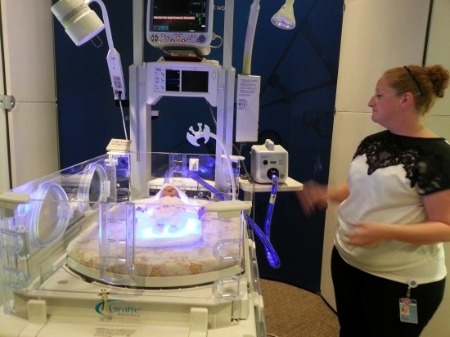Visiting GE Healthcare’s R&D center in Milwaukee
-
기사 스크랩
-
공유
-
댓글
-
클린뷰
-
프린트

◆GE Healthcare becomes the ‘leader of ultrasound’

The first thing that caught my eyes when I entered the R&D center was the ‘Ultrasound Hall of Fame’ on the first floor of the building. One wall was decorated with pictures of figures who contributed to the development of ultrasound technology. Surprisingly, there was also an Asian among the photographs.
Benjamin Fox, GE Healthcare’s Director of Public Relations for the Americas, introduced him as Young-choon Choi, the former president of GE Ultrasound Korea, who recently retired.
He explained, “In order to enter the Hall of Fame, one has to have decades of experience in the ultrasound industry and be clearly recognized in the industry. Only one person can receive the honor per year, and many recipients feel as if they’ve won a Nobel Prize. MR. Choi was the recipient of this year’s award.”
According to GE, Mr. Choi’s entry into the Hall of Fame reflects Korea’s position in the global healthcare industry.
Out of the GE’s seven ultrasound manufacturing facilities around the world, the largest site in volumes is located in Seongnam, Gyeonggi-do. GE’s ultrasound devices manufactured in Seongnam account for about 30% of GE’s total ultrasound production in volumes. Pat Venters, Ultrasound CMO, GE Healthcare, said, “Korea has grown to become the Mecca of ultrasound devices. Samsung Medison’s entry into the ultrasound market will have a positive effect too.”
GE Healthcare’s ultrasound sales alone amount to USD 2 billion per year. It is the global number one company in this field. The secret to this success is the leading technology developed at the GE Research Park. LOGIQ E9, which is one of the best sellers in General Imaging Ultrasound, features XD Clear, a technology that relieves inherent heat that can otherwise reduce sensitivity and penetration. This ultrasound device is widely considered to be one of the best ultrasound devices currently available, as it can be used to acquire images of various body parts such as the chest, thyroid, liver, and abdomen and helps to accurately diagnose obese patients. Pat Venters said, “The Logiq E9 originates from the Logiq S8 and Logiq S7 models which were developed and produced at the ultrasound manufacturing base in Seongnam. We are also planning to develop technologies that help eliminate the need for liver biopsies by accurately measuring the level of liver stiffness.”

Signa PET/MR is a leading device among PET/MRs. It enables clinicians to see early cellular changes that can be accurately mapped onto MR images. Early stage cancer was hard to diagnose, but PET/MRs help to locate it and confirm its exact size in 4D images. In addition, Silent Scan, which reduces the noise of MRIs, is another innovative technology. Eric Stahre said, “It reduces noise during MRI scans to 77 decibel which is similar to an electric mixer” adding, “Silent Scan is especially useful for infants or pediatric patients who were previously difficult to scan.”
New MR technologies that help patients with implants or joint replacements overcome difficulties during MR scans have also been developed. Due to the strong magnetic force exerted from MR devices, images of patients with implants could be distorted. GE Healthcare’s MAVRIC SL solution helps overcome this issue.
reporter=Lee jun hyeok, rainbow@hankyung.com

![[포토] 국립민속박물관에서 입춘첩 받아요](https://img.hankyung.com/photo/202502/01.39380283.3.jpg)
